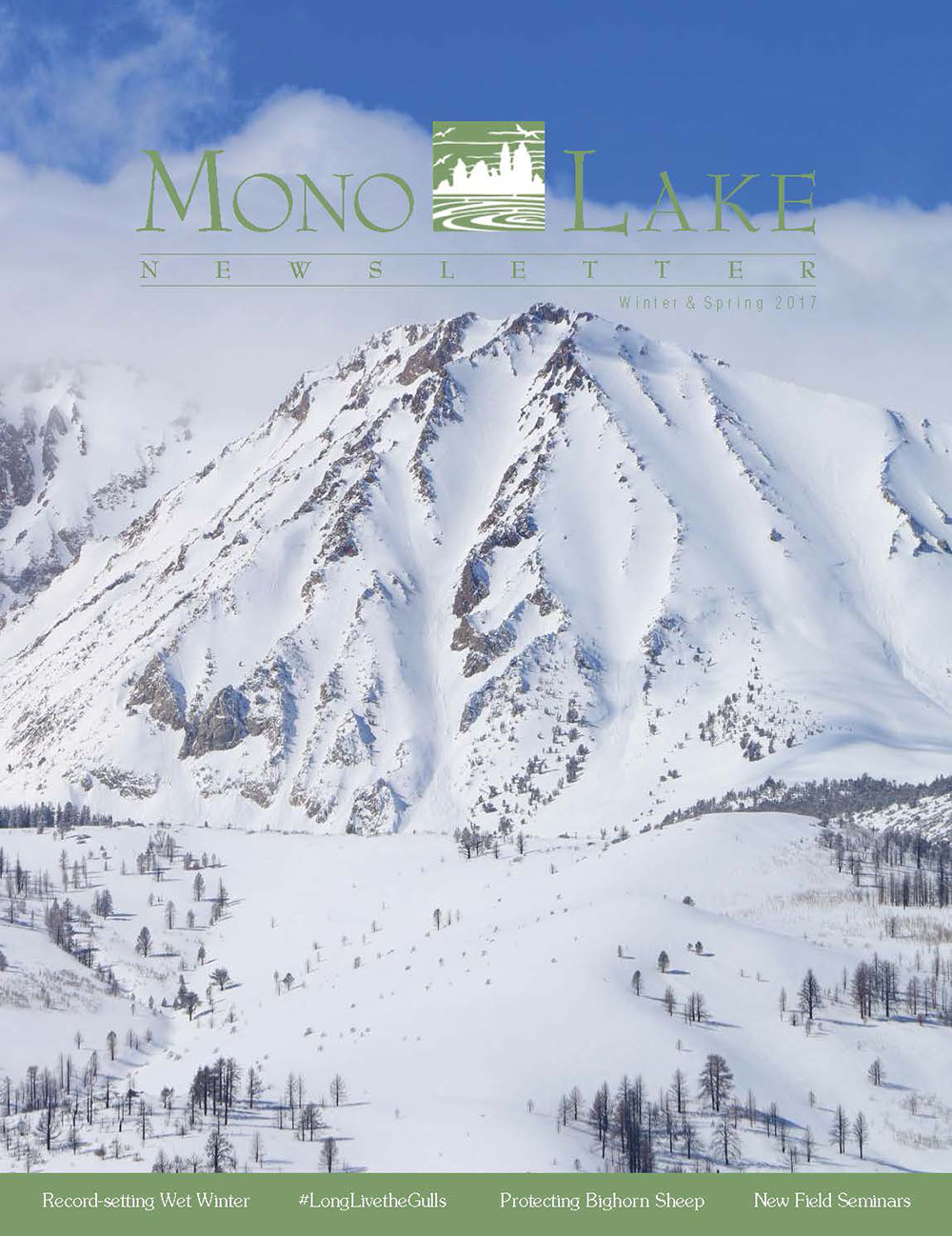
 Nimble. That’s the word of the year so far for the Mono Lake Committee. We were braced to face a sixth year of drought, with plans and contingencies in place to protect Mono Lake to the best of our ability. And then the calendar ticked over into 2017 and the weather faucets turned on! Suddenly, thankfully, our plans needed some new math.
Nimble. That’s the word of the year so far for the Mono Lake Committee. We were braced to face a sixth year of drought, with plans and contingencies in place to protect Mono Lake to the best of our ability. And then the calendar ticked over into 2017 and the weather faucets turned on! Suddenly, thankfully, our plans needed some new math.
I guess it shouldn’t surprise me—since 1978 we’ve worked to find solutions to human-created problems, which sometimes requires changing horses mid-stream.
The temporary fence we’ll be putting up in late March to protect the California Gull colony is a good example of that: a human-caused low lake level due to excessive water diversions and exacerbated by drought is threatening the gulls. We can do something to help solve the problem—put up a temporary fence until the snow melts and the lake can rise—and so we will. All the while calculating and calculating as Mono Lake rises and the fence can be shortened, instead of lengthened, as we had originally planned.
Bartshe writes on page 24: “Making the best cooperative decisions with the best information available is part of the legacy of the Mono Lake Committee.” You’ll see that throughout this issue of the Newsletter—from our near-weekly hydrologic model runs to factor a big winter into Mono Lake’s predicted rise, and how we can work together to best protect endangered bighorn sheep, to what we will do to stay nimble enough to adapt to a changing climate.
